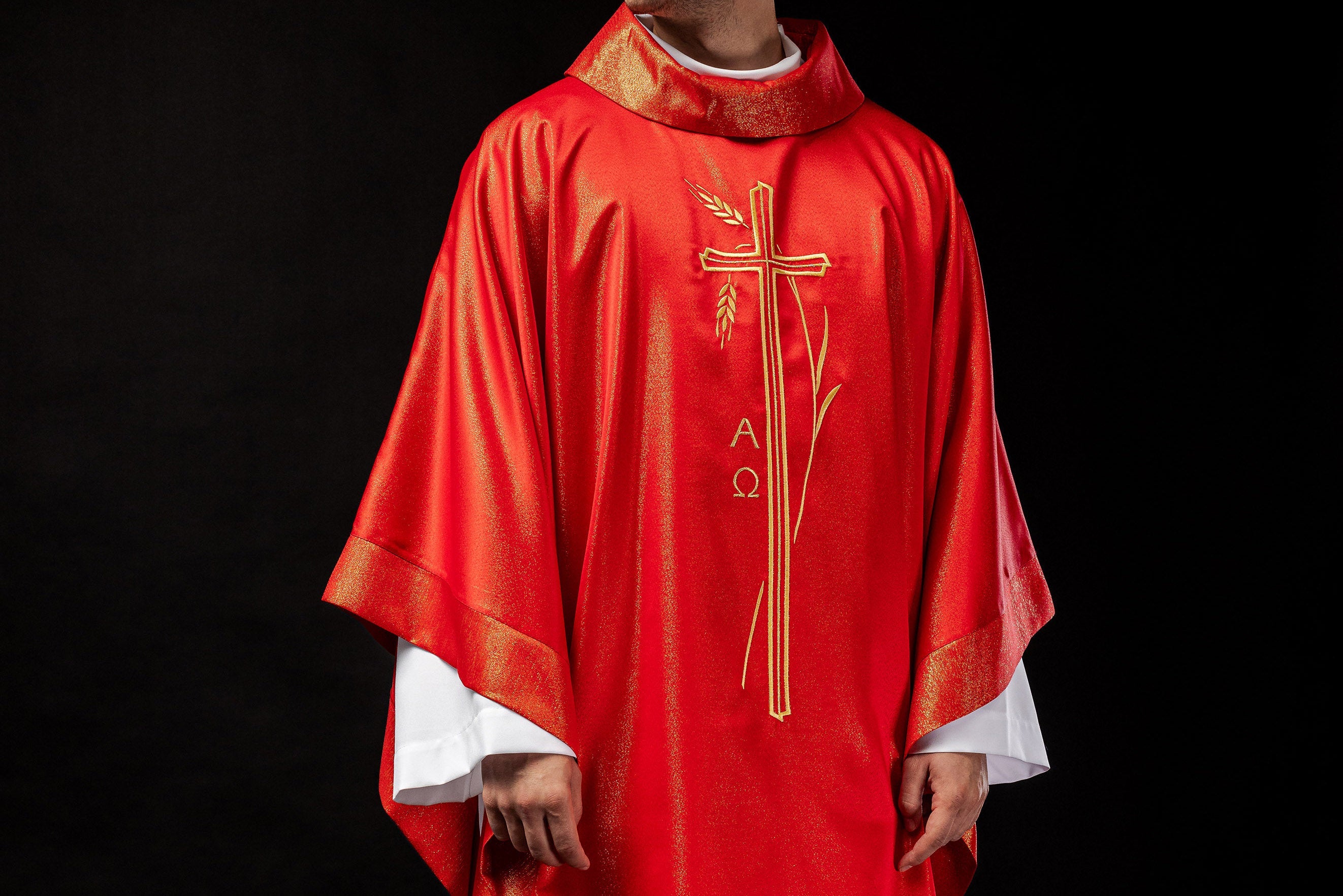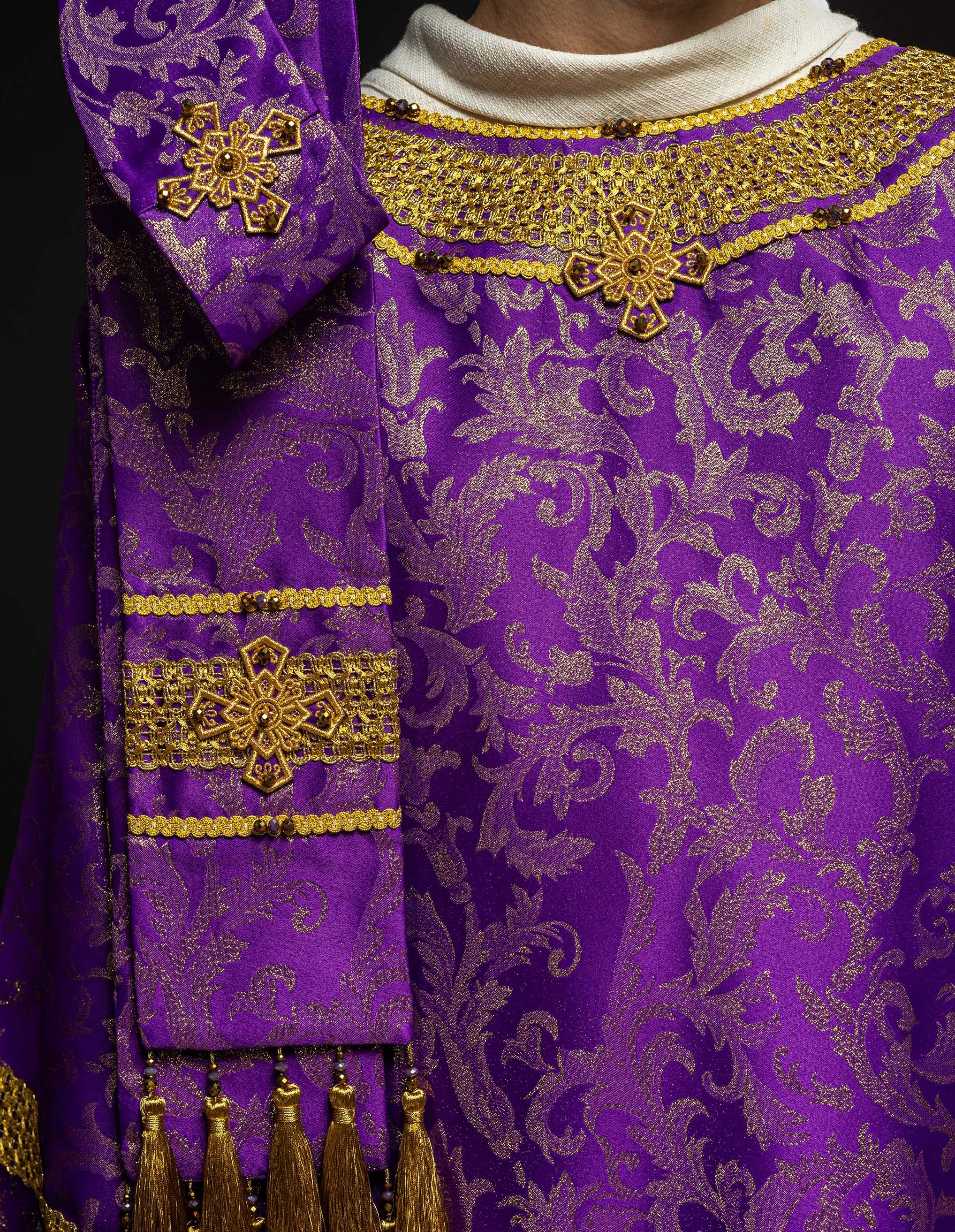
When does the liturgical vestment color change during the liturgical year?
When Does the Chasuble Change During the Liturgical Year?
The liturgical year in the Catholic Church is rich in symbols and traditions, and one of the most visible is the variability of the colors of liturgical vestments, including chasubles. The chasuble, being the most important garment of the priest during Mass, changes its colors depending on the liturgical season or feast being celebrated. This change is not accidental – each color carries a deep theological and spiritual meaning, helping the faithful to better understand the mysteries of faith that are celebrated at any given moment. Understanding when and why the chasuble changes is crucial for a fuller experience of the liturgy.
The Meaning of Liturgical Vestment Colors
The history and symbolism of liturgical vestment colors go back centuries. These colors are not merely decorations, but an integral part of the language of the Church, communicating its message to the faithful. Pope Innocent IV in the 13th century issued a decree establishing the use of colors, and in later centuries this tradition was further developed and codified. The currently applicable rules are based on the findings of the International Commission for the Coordination of Liturgy and Pastoral Care of the Episcopates of Central and Eastern Europe and Vatican instructions.
Here are the basic meanings of the colors and their application:
- White (Gold): Symbolizes joy, purity, innocence, peace, triumph, glory, salvation, light. It is the color of the Easter season, Christmas, as well as feasts in honor of Jesus Christ, the Mother of God, angels, and saints who are not martyrs. It is also used during the administration of baptism, confirmation, the sacrament of marriage, and ordinations.
- Red: Symbolizes martyrdom, sacrifice, blood, love, the fire of the Holy Spirit. It is used on Passion Sunday (Palm Sunday), Good Friday, the feasts of the apostles and martyrs, and Pentecost.
- Green: Symbolizes hope, life, growth, perseverance. It is the color of the ordinary time of the liturgical year, when the Church contemplates the public life of Christ and calls for conversion and living according to the Gospel.
- Purple: Symbolizes penance, conversion, expectation, a time of reflection and contemplation. It is the color of Advent and Lent.
- Pink: Is the color of joyful expectation and is an exception to the rule of purple on penitential days. It is used on the third Sunday of Advent (called Gaudete Sunday – Rejoice) and on the fourth Sunday of Lent (called Laetare Sunday – Rejoice).
- Black: Traditionally symbolized mourning and death. Currently, its use is rare, often replaced by purple. It is still sometimes used in Masses for the dead and on days commemorating all the faithful departed.
- Blue: Has a limited range of use and can be used in liturgies in honor of the Blessed Virgin Mary, especially in liturgies in Poland. It symbolizes virginity and purity.
Schedule of Chasuble Color Changes in the Liturgical Year
The change in the color of the chasuble marks the rhythm of the liturgical year and helps the faithful in spiritual preparation for particular seasons and feasts.
Advent Season
Advent is a time of joyful, but also penitential waiting for the birth of Jesus Christ. The dominant color of liturgical vestments is purple. Priests wear purple chasubles, symbolizing penance, conversion, and hope for the coming of the Savior. On the third Sunday of Advent (Gaudete Sunday), the use of a pink chasuble is traditionally permitted, which introduces a note of joy and heralds the imminent birth of Christ.
Christmas Season
After Advent, the solemn celebration of Christmas follows. From the Midnight Mass (evening of December 24) to the Feast of the Baptism of the Lord inclusive (Sunday after the Epiphany), the dominant color is white (or gold). It is the color of joy, purity, light, and salvation, perfectly reflecting the birth of Jesus, which brought hope and new life to mankind.
Ordinary Time (after Christmas)
After the end of the Christmas season, the first liturgical season called Ordinary Time begins. During this time, the main color of liturgical vestments is green. The green chasuble symbolizes hope, life, continuous spiritual growth, and the imitation of Christ in everyday life. This period lasts until Ash Wednesday.
Lent
Lent is a time of penance, reflection, prayer, and sacrifice, preparing the faithful to experience the mystery of the Passion, Death, and Resurrection of Christ. The dominant color is again purple, symbolizing contrition and conversion. On the fourth Sunday of Lent (Laetare Sunday), similar to Advent, the use of a pink chasuble is permitted, which brings relief in penance and heralds the imminent victory of Christ over death.
Holy Week and Easter Season
The culmination of the liturgical year is Holy Week. On Holy Thursday, the color white is required in both Masses (in the bishop's cathedral and in the Upper Room). Good Friday is the day commemorating the Passion of the Lord, and the liturgy is presided over in red vestments, symbolizing the blood of Christ shed for the salvation of the world. Holy Saturday, until the Easter Vigil, is a day of silence and expectation. The Easter Vigil, which is already the beginning of the celebration of the Resurrection of the Lord, begins the Easter Season, in which the dominant color is again white (or gold). The white chasuble accompanies the faithful throughout the Easter Season, until Pentecost Sunday.
Ordinary Time (after Easter)
After the end of the Easter Season and the Feast of Pentecost, the second Ordinary Time begins. During this time, priests use liturgical vestments in green, continuing the theme of imitating Christ and living according to the Gospel.
Feasts and Memorial Days
In addition to the fixed liturgical seasons, the color of priestly vestments also changes depending on the feast or liturgical memorial day being celebrated:
- Red vestments are used on the feasts of the apostles and martyrs, as well as in liturgies dedicated to the Holy Spirit.
- White vestments are worn on feasts in honor of Jesus Christ (other than those related to the Passion), the Mother of God, angels, saints who are not martyrs, and on feasts related to the sacraments of Christian initiation (baptism, confirmation).
- Purple vestments may be used on the feasts of Our Lady of Sorrows.
- Blue vestments, as a Marian color, may be used in some liturgies in honor of the Blessed Virgin Mary in Poland.
- Black vestments, although less commonly used today, may be used in Masses for the dead or on days of reflection on transience.
How to Choose the Right Chasuble?
The selection of chasubles, especially for parishes that need complete equipment, should take into account not only the liturgical schedule, but also the aesthetics and quality of workmanship. HAFTINA TEXTILE GROUP SP. Z O. O. offers a wide selection of chasubles made of high-quality materials, decorated with intricate computer and hand embroidery. Chasubles are available in the full range of liturgical year colors, with a variety of motifs – from traditional Eucharistic symbols, through images of saints, to modern designs. When choosing a chasuble, it is worth paying attention to:
- Material: Fabrics such as silk, polyester, velvet or cotton blends ensure durability and elegance.
- Embroidery: Attention to detail in the embroidery, whether machine or hand, testifies to the artistry of the workmanship. The embroidery motifs should be consistent with the purpose of the chasuble.
- Cut: Chasubles can have a Roman cut (wider, more classic) or a Gothic cut (narrower, more fitted).
- Liturgical Seasons: Having sets of chasubles in each of the basic colors is essential for the proper celebration of the liturgical year.
Understanding when the chasuble changes during the liturgical year is crucial for the proper experience of the liturgy. The colors of priestly vestments are not only a tradition, but also a form of teaching that helps the faithful in spiritual preparation for the mysteries of faith celebrated at that time. HAFTINA TEXTILE GROUP SP. Z O. O. supports parishes and clergy in providing beautiful equipment that complies with liturgical requirements, offering the highest quality chasubles and liturgical vestments.
```

